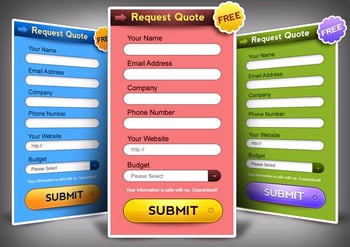What’s the return on investment of a phone call? A form fill? An email click-through? In the age of data, using tracking tools to monitor and record your lead sources and determine the dollar value of every conversion—that is, every action a prospect takes—is easier than ever. Let’s take a look at some of the things you should be measuring, and how to track them.
Phone call tracking
When someone calls your business, it stands to reason that they found your number somehow, whether through word of mouth, a Google search, eventhe Yellow Pages (yes, they still exist). Determining how they found you is a critical step in determining whether the marketing effort you employed that ultimately resulted in the lead was worth your money.
Using a unique phone number for each campaign—PPC marketing, email, billboards, your website design—allows call tracking software to determine where your leads are coming from. This allows you to ramp up or dial down campaigns as needed and focus your valuable marketing budget where you know it’ll have the greatest impact.
Custom link tracking
Custom URL parameters are an incredibly easy way to track the success of everything from your direct mail pieces to your social media campaigns. If the term “custom URL parameters” scares you, take a breath—it’s not nearly as difficult as it sounds.
When you integrate your site with Google Analytics, you create the rules by which your data is tracked. In doing so, you’re able to effectively monitor the lead sources of traffic to specific pages of your website, including direct traffic, search engines, referring sites, social media leads, and more. Again, when you learn the channels that drive targeted traffic, and measure which of those leads convert over time, you’re able to put more money and effort into the campaigns that work best for you.
Unique landing pages
When you run an ad campaign, where are you attempting to drive traffic? Sure, you want visitors to go to your www., but unique landing pages for each campaign allows you to do a couple great things.
First, it allows you to track your lead sources (which at this point, should be a given). But it also allows you to create highly targeted messaging leading to a call to action. Special offers, coupons, and discounts on your landing pages may result in increased conversions. As Unbounce says, “Targeted promotion or product specific landing pages are focused on a single objective that matches the intent of the ad that your visitors clicked on to reach your page.”
Custom forms
We’re not going to say that every page of your website needs a form, but if we’re being realistic about conversions, most should. Long gone are the days when a simple email address to contact was the best way to

solicit customer questions and feedback. With contact forms, you can collect data about the type of people who want to know more about your business, and store their IP addresses so that you’ll know when they return.
Form-fills should also factor heavily into your content marketing strategy. Provide value to your customers for free—the only thing they’re required to give you is an email address so that you can keep in touch. (If you’re not using forms as a part of your content marketing strategy, or if you’re not doing any content marketing at all, read up on making this incredibly valuable marketing approach work for you.)
So much data to track
Think about all of your marketing campaigns—email, PPC, direct mail, social media, even billboards or the brochures you might distribute for a special event. Every single person that takes an action as a result of these activities is a data point. When you view them as such, and when you’re confident about the pool of data you’ve gathered, you can ensure that the money you spend on your marketing is invested rather than wasted.
And with a limited marketing budget, every dollar that marks a return on your investment is critical. Our marketing company in Lancaster, PA can help you get your arms around your marketing efforts and track how that investment is paying off for you.

